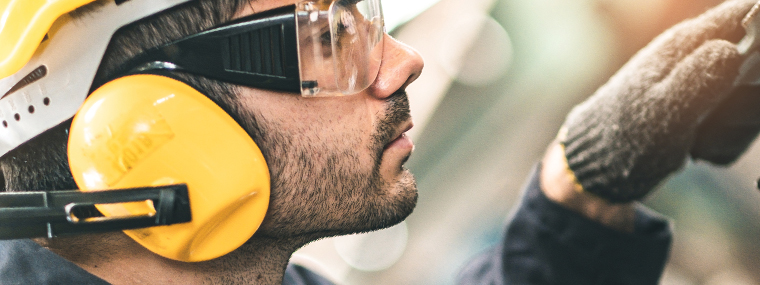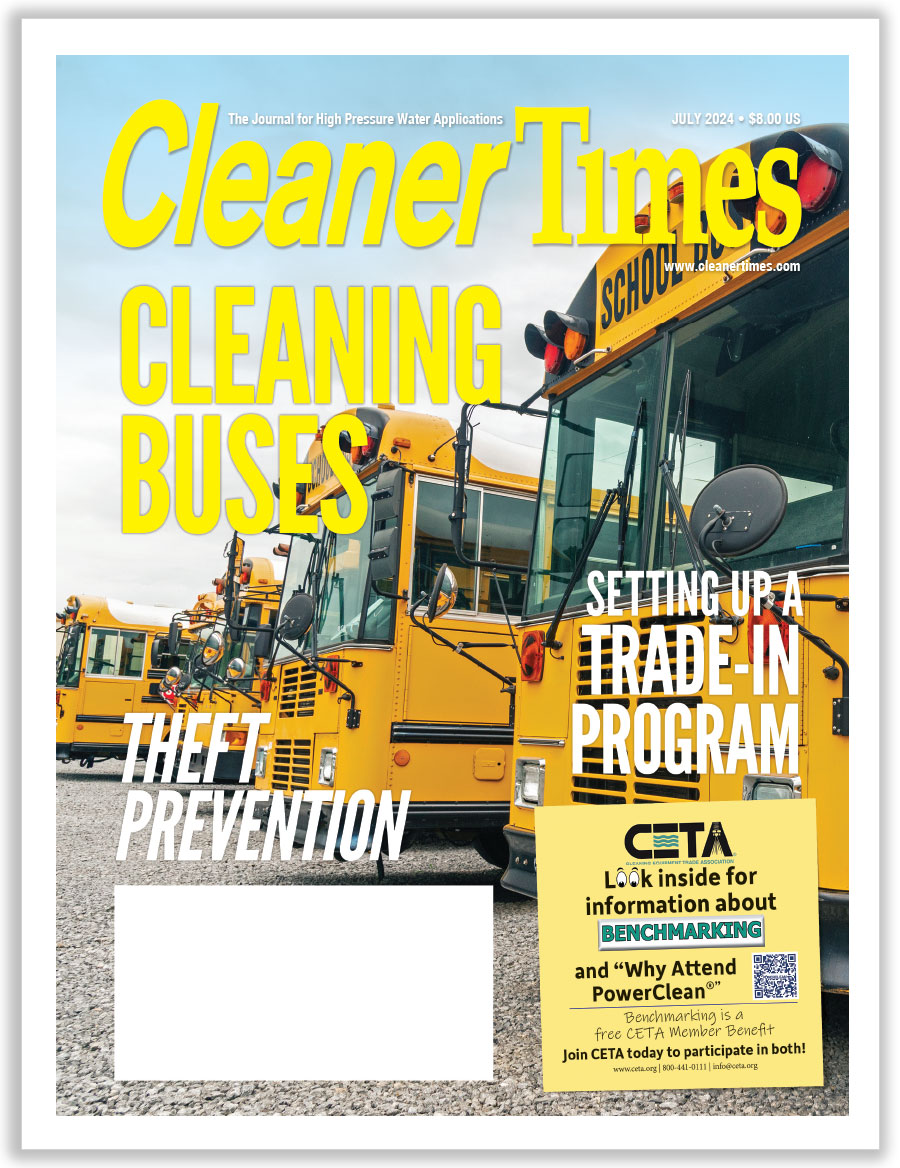
Safer and Safer Still
Safety in Manufacturing
By Diane M. Calabrese / Published May 2021

Safer and safer still. In a nugget, that’s the progression of safety in manufacturing.
Take in a 1950s-era documentary video of foundry workers, riveters, or employees on an automobile assembly line. Be mesmerized by molten metal, red-hot ingots, noise, repetitive action, the size of machines—well, everything.
By the end of the last century, the U.S. manufacturing sector had created an exceptionally safe work environment. Innovation in processes and a greater focus on safe practices both contributed to the outcome.
The fourth largest industrial sector in the United States, manufacturing employs 15.6 million people and con-tributes 11 percent to the GDP. As safe as the sector is, it still ranks higher in percentage (12.5 percent in 2017) of nonfatal injuries per capita than the U.S. workforce as a whole. (Source of numbers is the Manufacturing.gov website.)
Robotics and additive manufacturing, which separate people from machines, enhance safety dramatically. Yet it’s not just the big changes in automation that lower risk. Incremental, well-thought-out changes in design and processes in manufacturing do as well.
“During the past 10 years, there are many changes that have been made in manufacturing to make the working environment safer for employees,” says Dean Steger, the safety manager at Mi-T-M Corporation in Peosta, IA. And he gives us several examples.
“Machine guarding has improved in the last 10 years, safety sensors such as light curtains have been added, and motion sensor designs have been upgraded to become more sensitive, pre-venting an employee from being injured on the job,” explains Steger. “Material handling equipment such as the standup forklift have been upgraded to prevent the equipment from being operated if an employee has any part of their body outside of the operator compartment.”
Reducing the amount or kind of physical energy employees have to expend has also improved safety. “Vacuum hoists have also been integrated into manufacturing in the past 10 years to prevent back injuries to employees,” says Steger, offering one example.
The modifications that improve safety derive from a structured approach to review and implementation. “The safety department at our company performs facility reviews in various departments throughout the year,” says Steger.
“Each of our facilities is divided into zones,” explains Steger. “A different zone is chosen each time, where safety inspectors will do a thorough inspection of that zone covering every aspect, such as trip hazards, chemical labeling, cleanliness, lifting device inspections, and anything else that could be a safety concern for employees.”
On that last point, Steger emphasizes the input the process encourages and uses. “Our employees are very good at notifying us if they spot a safety concern in their departments, not only for themselves but also for the safety of their coworkers.”
Input from experts and regulators is also important, says Steger. “Employee safety is our number one priority, which is the reason our company has used Iowa OSHA con-sultation to assess our safety program and to recommend any changes or additions to safety measures currently in place to protect our employees.”
Steger recommends the approach to others in the industry. “Having Iowa OSHA consultants visit our facilities was a very good decision made by management,” he says. “For any company that is looking for ways to better their safety program or validate their current program, Iowa OSHA or a corresponding state OSHA consultation is a great way to accomplish that.”
Reach Out
Manufacturers know that reaching out to everyone from employees to regulators results in the most comprehensive approach to safety. In seeking answers to our questions, in fact, Jenn Wolfe, information technology manager at BE Power Equipment in Abbottsford, BC, reached out to members of the company’s team at Canadian and U.S. facilities.
Wolfe compiled team member responses to provide us with a snapshot of the intense focus on safety at her company. In the last decade, the company has made three changes in manufacturing processes that have made the safe even safer.
“Revamping the production line for more ergonomic and improved production flow” is one, says Wolfe. “The use of more equipment lifts and hoists to avoid muscle strain and fatigue” is another. And a third is an increase in quality control inspections.
Mechanical assists in lifting include a vacuum lift for lifting units off the production line into the box, explains Wolfe. Hoists also function at the front of the production line.
Wolfe shares some of the techniques her company uses to ensure employees remain alert and follow safe practices at every juncture. “Leadership training is augmented by having managers/supervisors attend monthly JHSC [Joint Health and Safety Committee] meetings to foster collaboration and keep communication open,” she explains.
There is also “regular job rotation to avoid repetitive strain and or test room exposure,” says Wolfe. Add “working on a safety culture mentality” as an ongoing effort.
The safety culture mentality means being proactive, explains Wolfe. That is ensuring team members know how to prevent safety problems from arising. It also means that employees are encouraged to speak up about safety concerns or issues.
The engagement of employees is coupled with verifying performance of machines. There are regular equipment inspections, including daily forklift inspections, says Wolfe.
The value of the perspective on safety from an individual outside a company cannot be overstated. Whether a regulator or a consultant, that person can often provide new insight into how to make a safe environment even safer.
“Our company worked with WorkSafeBC on a PACE [Program and Committee Evaluation] initiative over six months to help improve safety standards by helping to prevent and reduce injuries in the workplace,” says Wolfe. [WorkSafeBC is the workers’ compensation statutory agency of British Columbia.]
“PACE gave us an outside perspective on how we can improve in our ability to identify, assess,
and help prevent injuries through controlled measures,” says Wolfe. One result: conducting risk assessments more frequently.
Keep Risk Down To The Minimum
Safety and zero risk are not synonymous. There will always be risk. The safest manufacturing facility cannot address every human and mechanical factor that may arise.
The lowest possible risk to employees is what the manufacturing sector aims to achieve. In some cases, removing one risk entirely may allow another risk to move in.
Consider advanced manufacturing (AM). Machinery is no longer the big risk. Instead, it is the advanced material and additive manufacturing processes used.
CDC studies have documented the risk of working with 3D printers. More than one-half of workers experience respiratory symptoms/reactions frequently (i.e., more than once per week).
NIOSH, the National Institute of Occupational Safety and Health, at the CDC launched a program in 2019 to identify and disseminate information about risks in AM, including how to manage them. Among its accomplishments to date are the reduction of emissions (by more than 98 percent) of 3D printers and the first standard on emissions for 3D printers (UL 2904).
On balance AM is likely to reduce risk in the workplace because it shortens production cycles, reduces costs, and reduces waste. A full risk assessment for AM requires looking at the risks it reduces and the risks it increases.
It’s the kind of assessment that must be made with every potential gain in safety. The forklift supplanted pulleys and skids and levers—and human muscle—but forklift accidents (falls from, collisions with people, rollovers) do occur. But the machine has improved overall safety dramatically.
Two other AM-related concerns of NIOSH are nano- and microplastic particles (NMPPs) and occupational exposure limits (OELs) to chemicals in the workplace. The cumulative effect of exposure can be harmful even when limited exposure is not.
Effects of handling metal powders and thermoplastic filaments also concern NIOSH. So, too, do the ergonomics of exoskeletons (worn by workers) in robotic-enhanced manufacturing.
The Occupational Safety and Health Administration (OSHA) takes the lead in worker safety. OSHA standard 1910.212, machinery and machine guarding, is one of the most important to manufacturers.
The standard details expectations for protecting operators of machines (and other employees near the machine). The guarding itself—to cordon off rotating parts, establish a barrier to sparks, etc., cannot become a hazard in itself.
Verifying that 1910.212 is met in-house on a production line is only one part of the responsibility for manufacturers. The other part is ensuring any equipment manufactured meets the standard when in use.
The OSHA eTool on machine guarding provides quick links to current guidance (See https://www.osha.gov/SLTC/etools/machineguarding/standards.html.) The guidance includes the reminder that OSHA can cite violations by referencing standards not its own (e.g., standards from ANSI).
Organizations such as those of iron workers and lathe workers have their own standards. And OSHA also defers to many of those standards when evaluating workplace safety.
OSHA advocates for finding and fixing possible problems before they lead to an event (injury, illness, or death). A focus on prevention improves compliance because employees are engaged. It also reduces costs to employers because it keeps employees safe.
Investment in a safe workplace offers one of the best returns—perhaps the best—that a business owner can make. In 2021, innovation in tools and processes is integral to safety.







